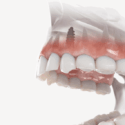Imagine the worst headache you’ve ever had. But here’s the thing. It’s not a migraine, an allergy, or even a concussion. It’s something far nastier. A cockroach has crawled inside your brain.
I can’t … that’s too gross. How did it get in there? Why did it crawl in there in the first place? And how bad is this going to hurt?
Do you want to hear something gross? Each year, there are over 100 medical cases in the United States of foreign body obstructions in the ear canal.
And 10% of those obstructions are insects. Most notably, cockroaches. Cockroaches can be anywhere from 1-5 cm (0.4-2 in) in length and typically live less than 300 days, but some species can live up to 2 years.
These little monsters are the ultimate survivors. They can survive for 40 minutes without air and up to 30 minutes underwater. And they’re tough too. Cockroaches can be almost completely flattened and still survive.
They’re meant to last, and one of the ways they like to ensure this is to hide in tight, dark crevices. You know, like baseboards, under floors, and your ear canal.
That’s right. And to make matters worse, the cockroaches have decided to dig a little deeper. Deeper as in crawling around your brain. OK, in defense of cockroaches (I never thought I’d say that), they are not actively looking to get inside humans.
But they sometimes crawl into ears because they are looking for a dark hiding space. Maybe it’s a sign of affection? A disgusting, nightmarish sign of affection. So while you’re fast asleep, Mrs. Cockroach is crawling along into your brain.
What would that even feel like? Well, first you would feel a swelling in your ear. Blood or pus might even drain from your ear. And in extreme cases, and to make matters worse, hearing loss is a real possibility.
You’re feeling this because as the cockroach explores your ear canal, it would encounter small hairs and wax. The ear canal itself is typically 0.8 cm (0.3 in) in diameter, so it would be a tight squeeze, even for a cockroach.
Next, the cockroach would need to cross the eardrum or the tympanic membrane. The tissues of the membrane are extremely sensitive. And the cockroach would have to push through it or, brace yourself, chew through it.
If you didn’t have a headache before, you sure will now. The cockroach will then makes its way to your inner ear, aka the labyrinth of the ear. This place lives up to its name. It’s a complete maze.
Located in the temporal bone, it contains the vestibule, the semicircular canals, and other parts of your head you weren’t expecting to have guests in. If the cockroach gets past this, then it could travel through the auditory nerve to the brain.
So let’s say the cockroach manages to get into your brain. It’s going to make itself at home, which is not a good thing for you. The cockroach would start digging holes and puncturing blood vessels in the process. This would lead to hemorrhaging, infection, and even death if left untreated.
Luckily for you, you’ve got some security. Your skull. An adult skull consists of the neurocranium, the protective shell, and the viscerocranium, the facial skeleton.
What all this means is you’ll be able to stop the roach in its tracks. But you’re not out of the woods yet. Apparently, roaches can’t crawl backwards, which is a horrible fact to learn while one is in your head. You need to go to the hospital, and get that sucker removed immediately!
So could this really happen to you? Well, maybe.
According to the Times of India, a very unlucky woman started suffering head pain and a “tingling, crawling sensation.” It wasn’t until her third visit to the hospital that doctors found the reason for her horrible headaches. A large, and very much alive cockroach was hanging out in her skull right between her eyes. It was there for twelve hours before doctors were able to remove it!
And that’s just one of several real-life cases of insects spelunking around in people’s heads. So, if you take anything away from this, it’s to protect that brain of yours. You never know what might be wanting to move in. But what if the tables were turned, and you were crawling around inside some creature?
Subscribe to What-If on YouTube or follow the show on Facebook Watch.
Sources
- “The Skull | Boundless Anatomy And Physiology”. 2020. courses.lumenlearning.com.
- “Bug In Ear: Symptoms And How To Get It Out”. 2020. medicalnewstoday.com.
- “Can a Cockroach Get Stuck in Your Ear? | How Common Is It? | SELF”. 2020. youtube.com.
- “Doctors find cockroach living on woman’s skull”. 2017. Fox News.
- “Cockroach Facts And Myths | Terminix”. 2020. terminix.com.
- “Cockroaches | Facts & Identification, Control & Prevention”. 2020. Orkin.
- “Your ears are cockroach heaven and that’s why they keep crawling in there”. 2018. The Verge.




























Gross. Good thing they stay in the garage.
Don’t sleep with food right next to your face!